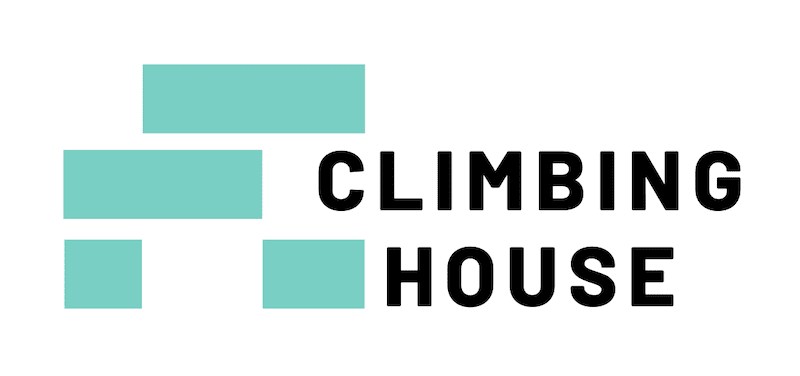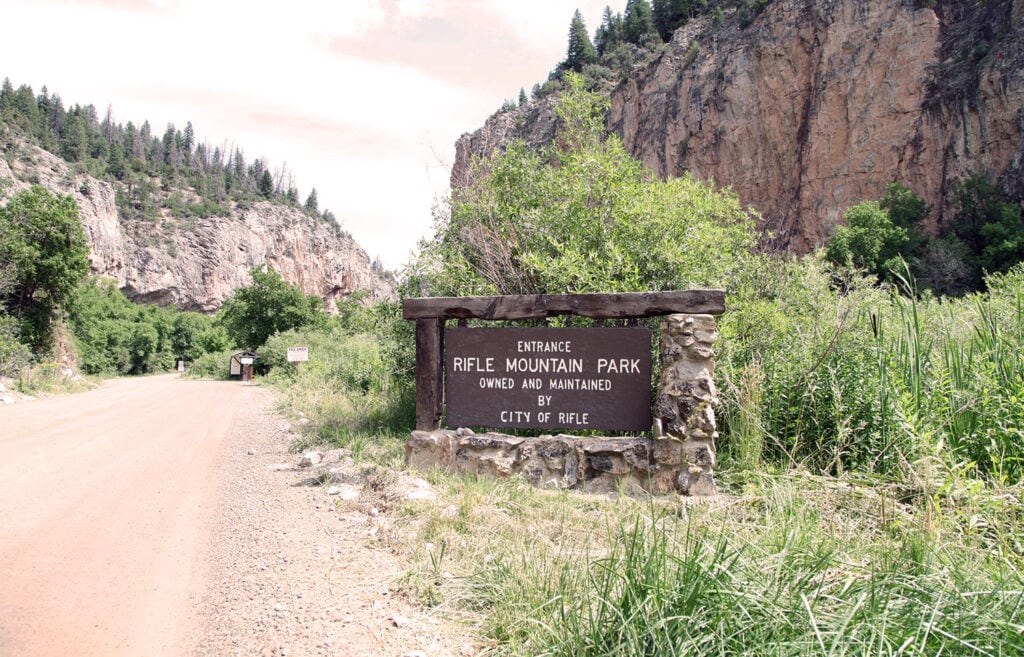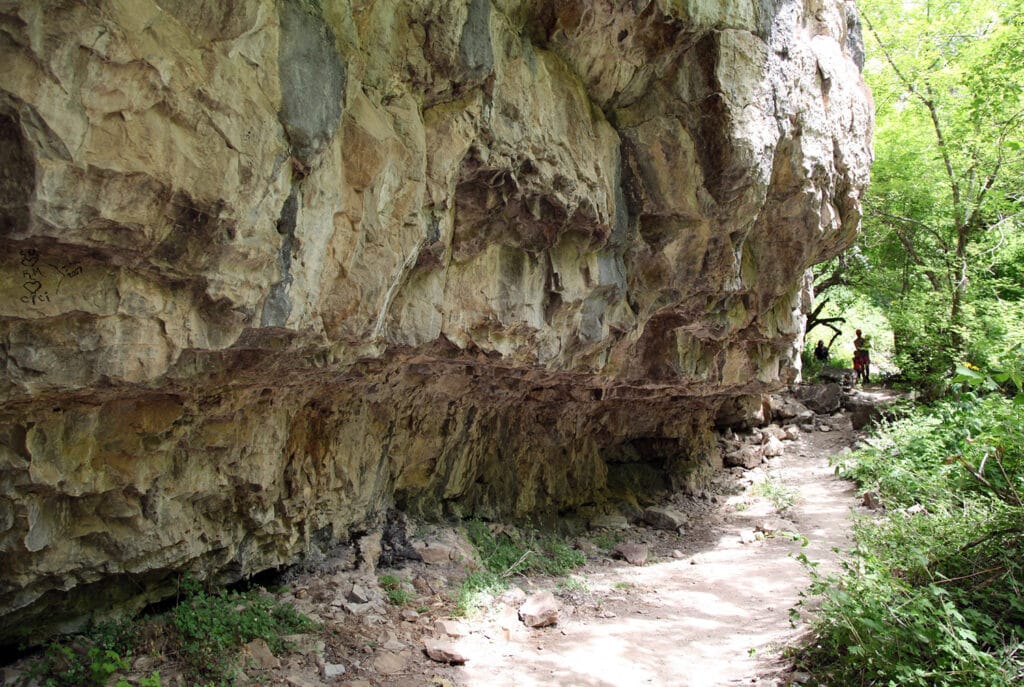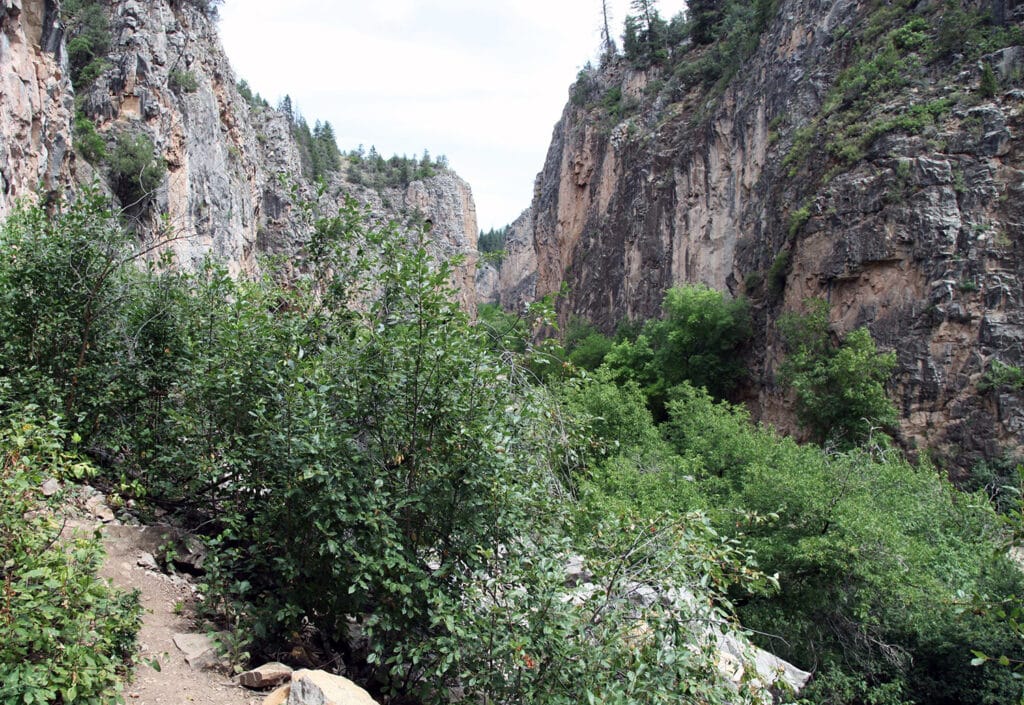Climbing at Rifle Mountain Park: The Ultimate Guide (2024)
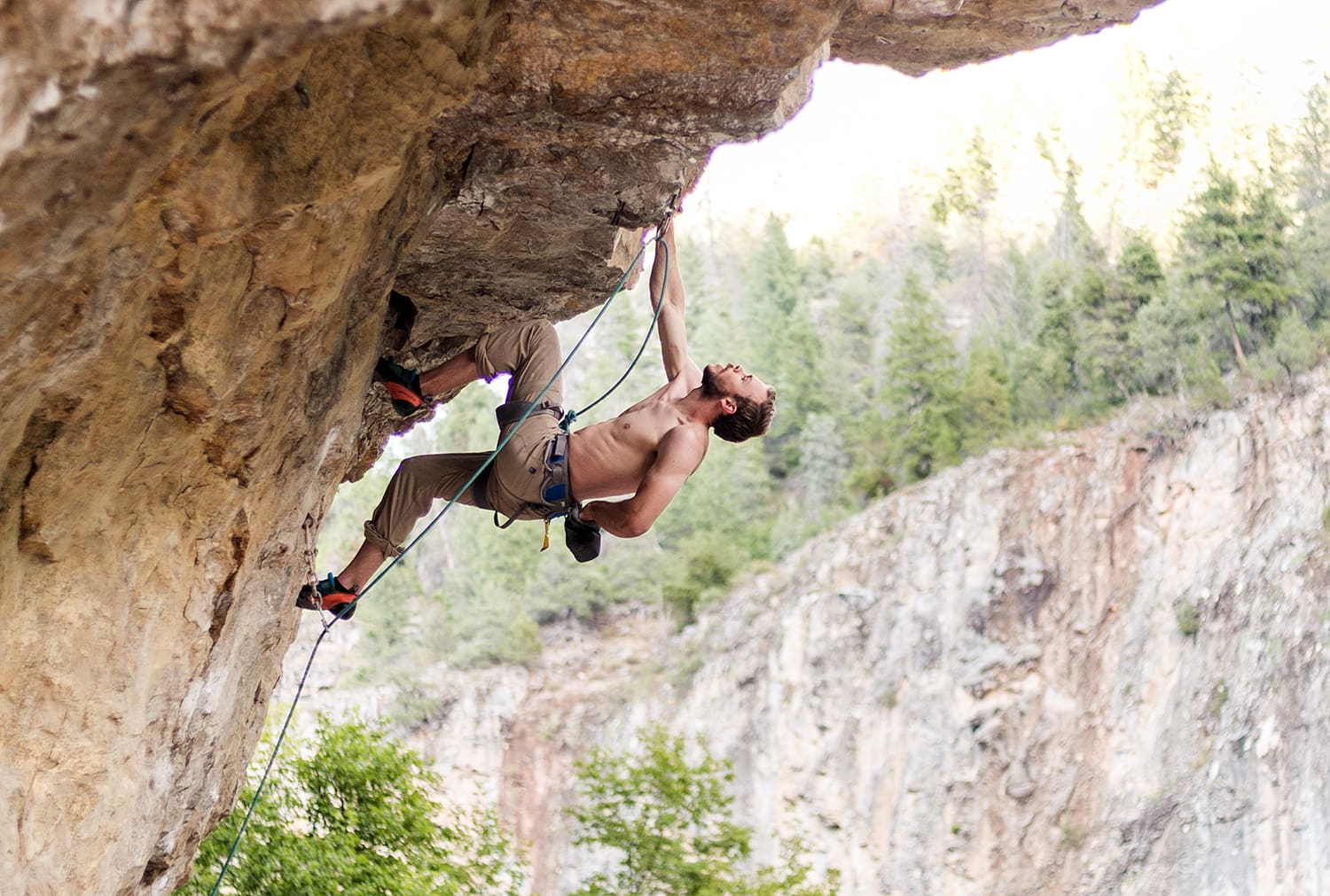
Published on: 05/05/2023
If you are a sport climber living in the Western United States, then you know about Rifle Mountain Park. You’ve definitely typed “climbing rifle” into your web browser. Over the years, Rifle has seen a lot of route development and has undergone numerous evolutionary phases.
Now, Rifle is one of the best sport climbing destinations in Colorado, known for its natural beauty and heinously hard climbing routes. It’s a mecca for easily accessible roadside sport climbs– practically a climbing gym outside. And yes, you can belay from the trunk of your car.
Keep reading if you are planning a trip to Rifle Mountain Park to sample all the steep stone and power routes it has to offer.
Brief History of Rifle Mountain Park
The city of Rifle was incorporated in 1905. Just five years later, in June of 1910, the town of Rifle secured the title of 320 acres of government land for its own use and management. However, there was a mandate that the land be used for public recreational usage.
Over the years, the city of Rifle bought more land, amassing roughly 455 acres. All of which later became established as the Rifle Mountain Park (1).
During the 1930s, in the midst of the Great Depression, Rifle Mountain Park became one of the earliest recipients of the Civilian Conservation Corps Program set forth by President Franklin Roosevelt. Their crowning achievement was constructing the Rifle Creek Community House, which is still in the canyon today.
Over the years, the city of Rifle continued to care for the Park, including installing a newly paved road. And now we climbers get to enjoy the resource. But besides climbing, the park offers primitive campsites, group areas, a community house, horseshoe pits, and hiking trails.
Geological History
The rock in Rifle Mountain Park is limestone. The limestone rock is part of the Leadville Formation.
The Leadville limestone is a Mississippian geologic formation, roughly 358.9 to 323.2 million years old. The upper part of the formation is oolitic limestone, once part of the sea’s floor, characterized by spheroidal sedimentary grains. The lower part is primarily dolomitic limestone, which comprises a majority of the climbable terrain in Rifle.
Nowadays, Rifle Mountain Park is a riparian mountain canyon that runs North and South. The canyon parallels the East Rifle Creek, which feeds into the Rifle Gap Reservoir and, eventually, the Colorado River.
Native American History
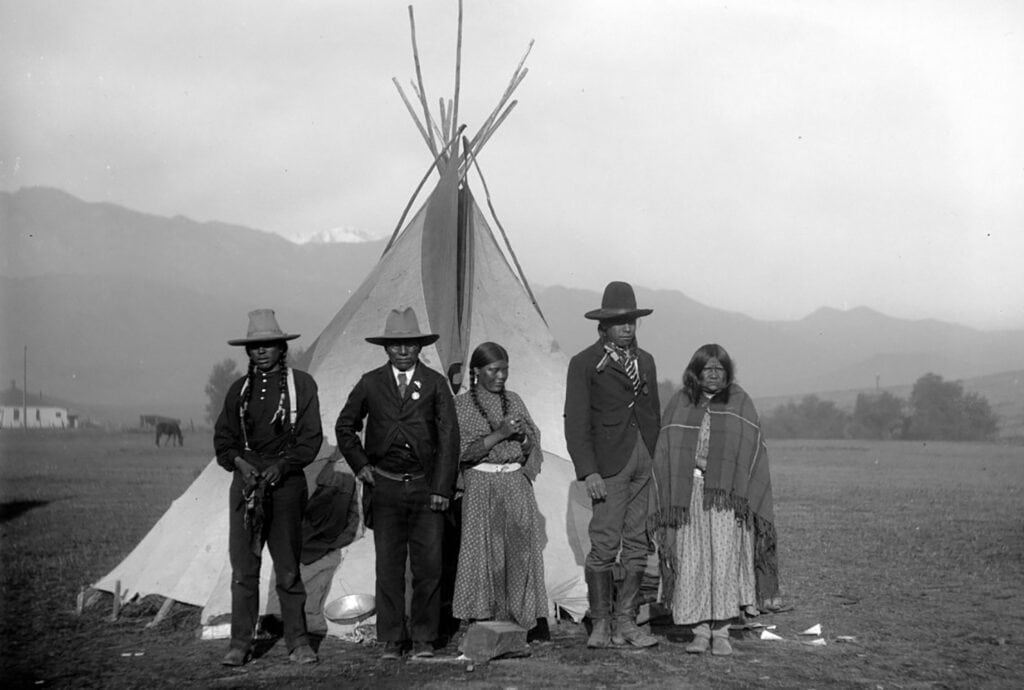
Long before the town of Rifle became a climbing destination, the Ute Indians inhabited large swaths of Western Colorado. Their people spanned into Utah, Wyoming, Eastern Nevada, Northern New Mexico, and Arizona.
The Ute traveled throughout the area on familiar trails that traversed the mountain ranges of Colorado. You can still hike sections of the Ute Trail in Rocky Mountain National Park (2) and the Colorado National Monument.
Over 30 years, roughly from 1840 to 1870 (3), a series of treaties slowly terminated the rights of the Ute Indians to possess land throughout Western Colorado.
How to Get There
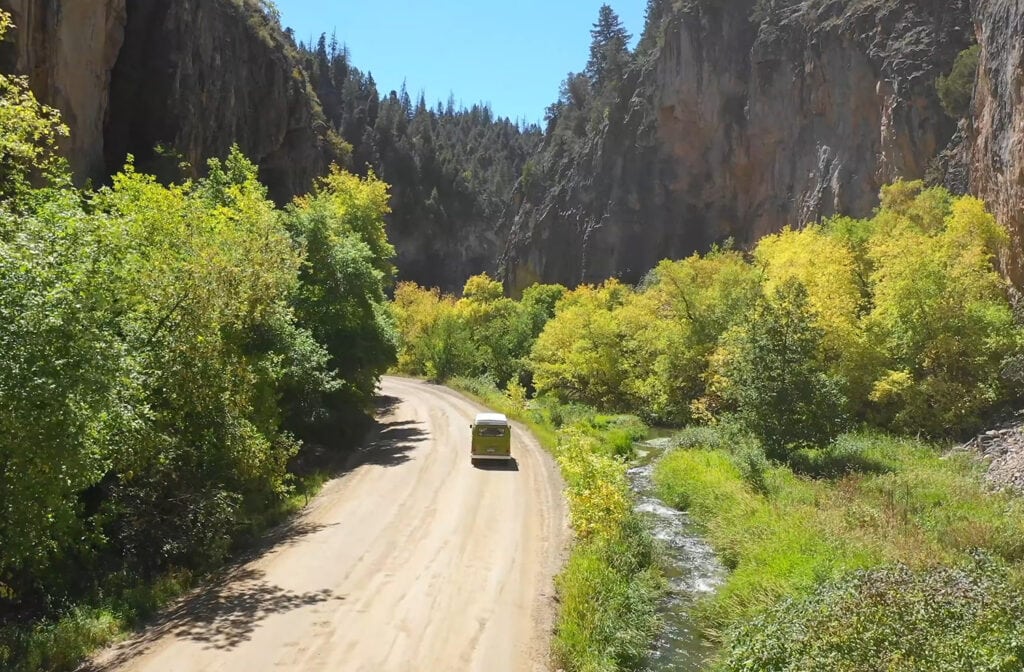
Rifle Mountain Park is located roughly 200 miles West of Colorado’s Front Range. Climbers traveling from far away will often fly in and out of Denver International Airport. There is also a regional airport in Grand Junction, CO, which is only 80 miles away.
Most local climbers get to Rifle by driving. Because of its location, Rifle is considered one of the local crags for climbers living in the Roaring Fork Valley and Western Slope of CO. However, hordes of Front Range climbers from Denver and Boulder will also make the drive to sample Rifle’s climbing.
Where to Stay
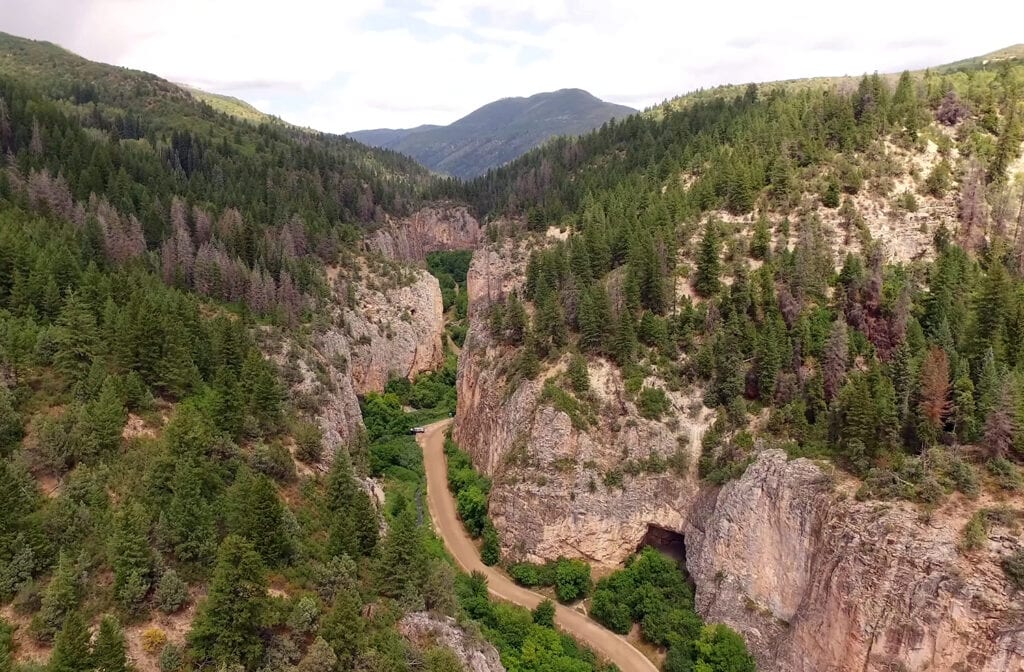
Most Rifle climbers camp when they are in the park. Depending on your preferences, planning, and time of year, there are various camping options.
- Rifle Falls State Park Campground
- Rifle Gap Campground
- Little Box Campground or Blue Spruce Campground-owned and operated by the city of Rifle
- The Meadows – free “dirtbag” camping, but 4×4 or AWD is advised for the dirt road
Most campgrounds have a permit system and camping fees that support the city of Rifle (4). If you are not camping in the canyon, you’ll still need to pay for a daily vehicle pass. But most locals buy the annual pass.
And, of course, as is normal nowadays, there is a wide selection of rentable vacation properties in nearby Western Slopes towns, most notably, Silt, CO, and nearby Glenwood Springs.
Rifle Mountain Park Rock Climbing
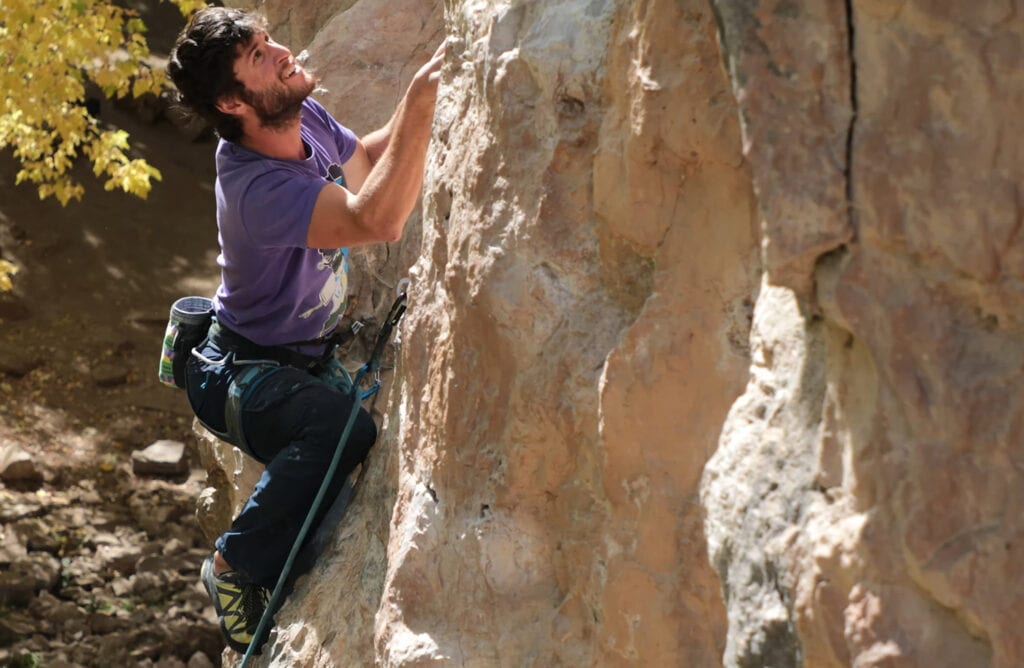
The Park offers some of the best limestone sport climbing in the United States. This is especially true for routes from 5.12 (7a) and up. Rifle is home to one of the largest concentrations of 5.13 (7c+) to 5.14 (8b+) sport routes in the country.
A handful of moderate routes (5.11/6b+ and below) are on the lower-angled rock. However, the bulk of the climbing at Rifle is characterized by slightly overhanging and very overhanging routes. The routes tend to be complex and demand a lot of power endurance.
Below I will talk about eight of the largest and most popular crags in Rifle Mountain Park. However, there is much more to continue exploring once you get there.
The Wasteland
This is where the sport climbing in Rifle started. The classic route Never Believe (5.12d/7c) was the first sport route in the Park.
The Wastlane is characterized by short power climbing on blue-grey limestone. The climbing is sustained and powerful. Many climbers find the Wastlane to be sandbagged because of the hyper-polished nature of the climbing holds.
Classic Routes in The Wasteland
- Community Service, 5.10d (6b)
- Never Believe, 5.12d (7c)
- Espresso, 5.12d (7c)
- The Beast, 5.13a (7c+)
- El Chapo, 5.13b/c (8a)
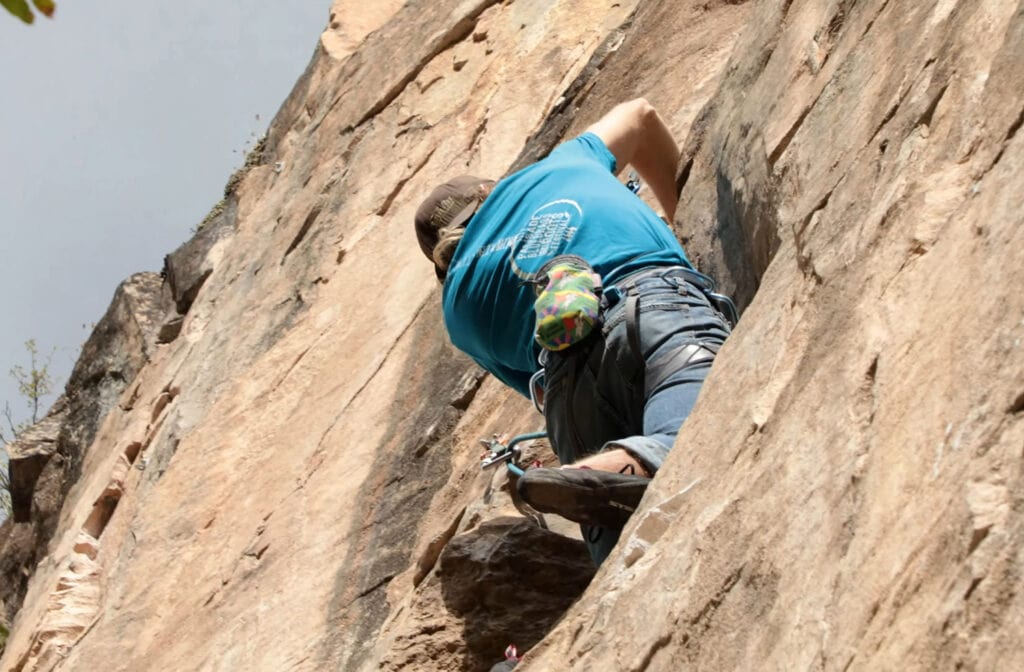
The Arsenal
This area offers blocky cave climbing. The rock is riddled with smooth pockets, cracks, and blocky pinches that make the climbing thuggish and powerful.
Classic Routes in The Arsenal
- Pretty Hate Machine, 5.12b (7b)
- Pump-O-Rama, 5.13a (7c+)
- Pump-O-Nator, 5.13a (7c+)
- Sprayathon, 5.13c (8a+)
- The Colinator, 5.14a (8b+)
Anti-Phil Wall
This zone is one of the largest in Rifle Mountain Park. It is home to steep and sustained overhanging routes. The routes here are long and tall and do not pull through caves like other areas in the Park.
Classic Routes on the Anti-Phil Wall
- Purple and Green, 5.11a (6b+)
- Easy Skankin’, 5.12a (7a+)
- I am Not a Philistine, 5.12c (7b+)
- Philibuster, 5.13a (7c+)
- The Anti-Phil, 5.13b (8a)
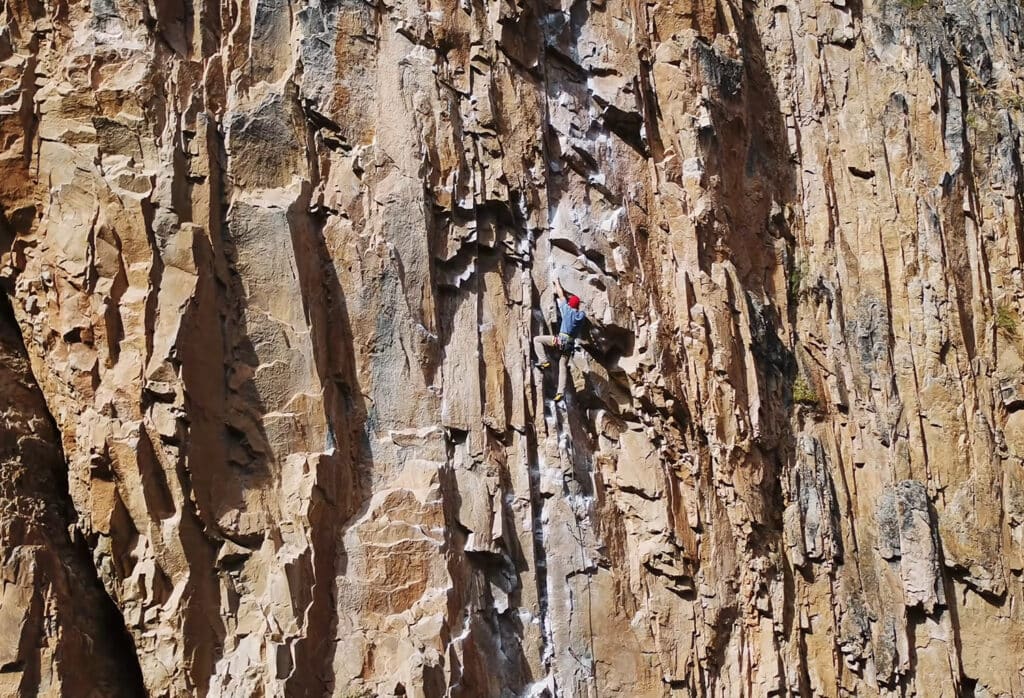
The Project Wall
This is Rifle’s most public crag due to its roadside location. Therefore, it can be a little noisy and fairly crowded. However, the climbing at the Project Wall is well worth the potential wait. Many of the routes are 200+ feet long with a looming steepness and travel through attractive blue and greywater streaks.
Classic Routes at The Project Wall
- Rehabilitator, 5.11c (6c+)
- Hang ’em High, 5.12b (7b)
- The Eighth Day, 5.13a (7c+)
- Apocalypse ’91, 5.13b (8a)
- Waka Flocka, 5.14a/b (8b+)
Ruckman Cave
This is one of Rifle’s most popular zones. Many routes end under a large roof, although some climb through the roof. And others climb the steep walls on either side of the massive roof. The climbing here is solid and is home to some of the most aesthetic natural climbing holds you’ll ever touch.
Classic routes in the Ruckman Cave
- Choss Family Robinson, 5.11c/d (6c+/7a)
- Street Knowledge, 5.12a (7a+)
- In Your Face, 5.12d (7c)
- Beer Run, 5.13a (7c+)
- Waiting for 21. 5.13b/c (8a)
Ice Cave Walls
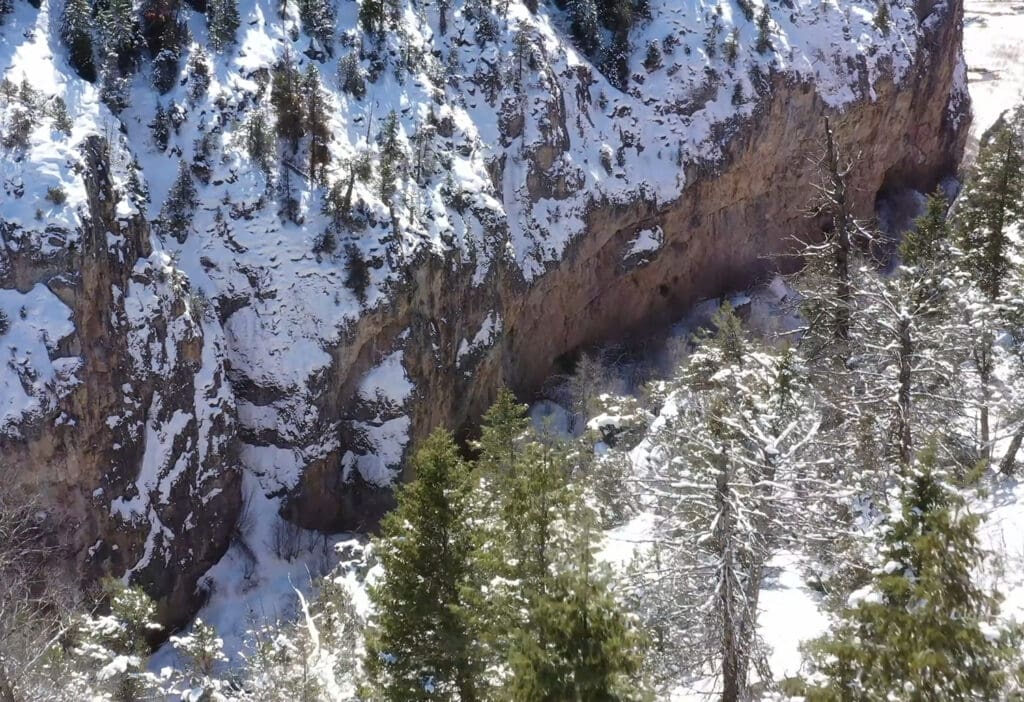
This area hosts the Park’s largest selection of moderate climbs. Most climbs clock in between 5.8 and 5.11, making this area a popular spot for warming up and mid-level sport climbers. Many routes are on vertical rock, although some navigate through bulges and small roofs. The climbing here can feel polished by shoe rubber, so bring a brush and get ready to pull harder than you should.
Classic Routes on the Ice Cave Walls
- Rickles, 5.8- (5-)
- Merry Maids, 5.10a (5c)
- Lovin’ You is a Dirty Job, 5.10b (6a)
- Feline, 5.11b (6c)
- Woody, 5.11d (7a)
The Wicked Cave
This area is home to Rifle’s longest and hardest climbs. Rifle’s first 5.14a (8b+), Slice of Life, was put up in the Wicked Cave. But it has since been downgraded to 5.13d (8b) due to improvements in kneebar technology and technique.
The cave proper is too chossy to climb and is often riddled with water drips and icicles. Therefore, most of the climbing occurs on the mega-steep wall to the right of the cave. Power endurance is critical for success in this area because all the routes are complex endurance fests to the very end.
Classic Routes in the Wicked Cave
- Deity, 5.13a (7c+)
- Quick Tick Egyptian. 5.13b (8a)
- Piece of Cake, 5.13d (8b)
- Zulu, 5.14a (8b+)
- Bad Girls Club, 5.14c/d (8c+/9a)
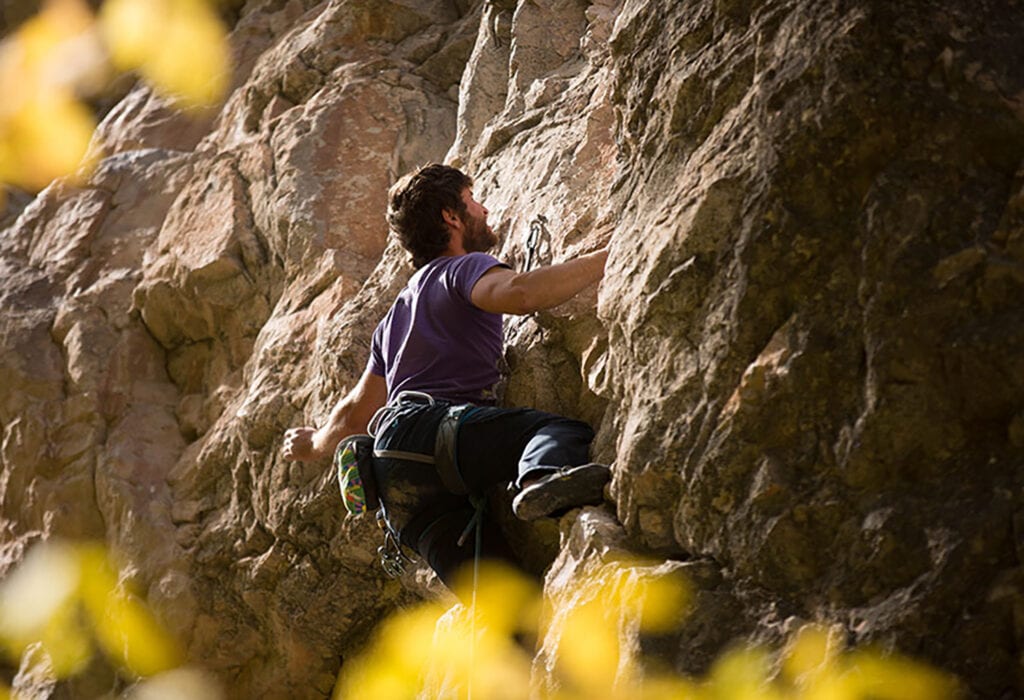
Meat Wall
This zone is one of the busiest areas. Due to the close-to-vertical terrain, there is constant traffic on Meat Wall routes. However, don’t let that deter you. Just get up early and enjoy the high-quality climbing before the crowds can form.
Classic Routes on Meat Wall
- Cold Cuts, 5.11a (6b+)
- 80 Feet of Meat, 5.11b (6c)
- Crime and Punishment, 5.12a (7a+)
- Le Specimen, 5.12d (7c)
- Blocky Horror Picture Show, 5.12d (7c)
Recommended Guide Books and Other Resources
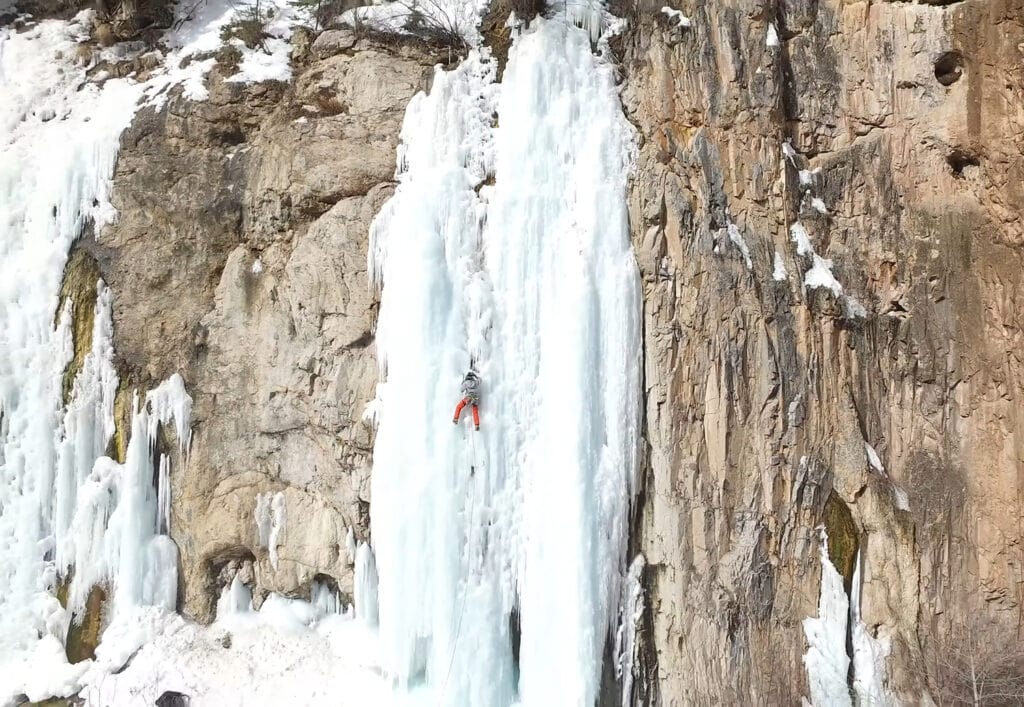
The best and most knowledgeable written resource for rock climbing in Rifle Mountain Park is, by and large, Rifle: A Climber’s Guide (5) by Derek Krol.
This guide book is loaded with helpful beta photos of Rifle’s pocket and tufa-riddled stone and contains all the new routes being put up by route developers.
For more helpful information about accessing and conserving the climbing in Rifle Mountain Park, check out the Rifle Climber’s Coalition (6). And if you are local, I recommend joining the Rifle Climber’s Coalition (RCC).
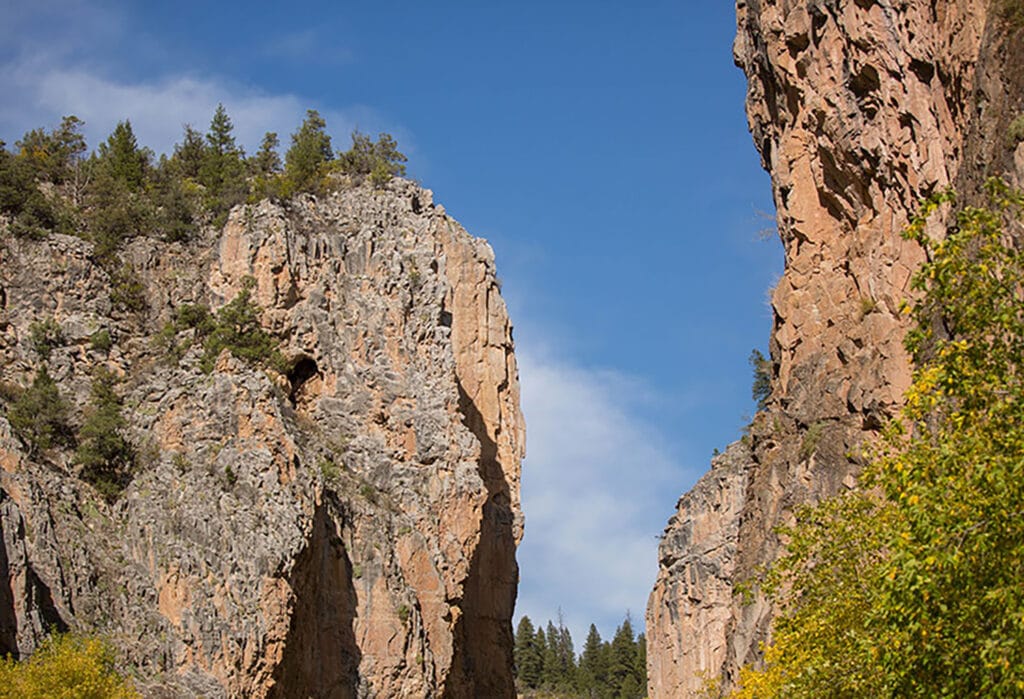
Even though the city owns the rocks, the RCC is responsible for the climbing. They participate in new route development, refurbish older routes, and preserve parts of the canyon that are strictly off-limits.
Lastly, you can always find more information on Mountain Project (7) if you prefer a digital format. Just don’t forget to take the comments on Mountain Project with a grain of salt. You’re better off going and finding out for yourself.
Tips to Have the Best Experience
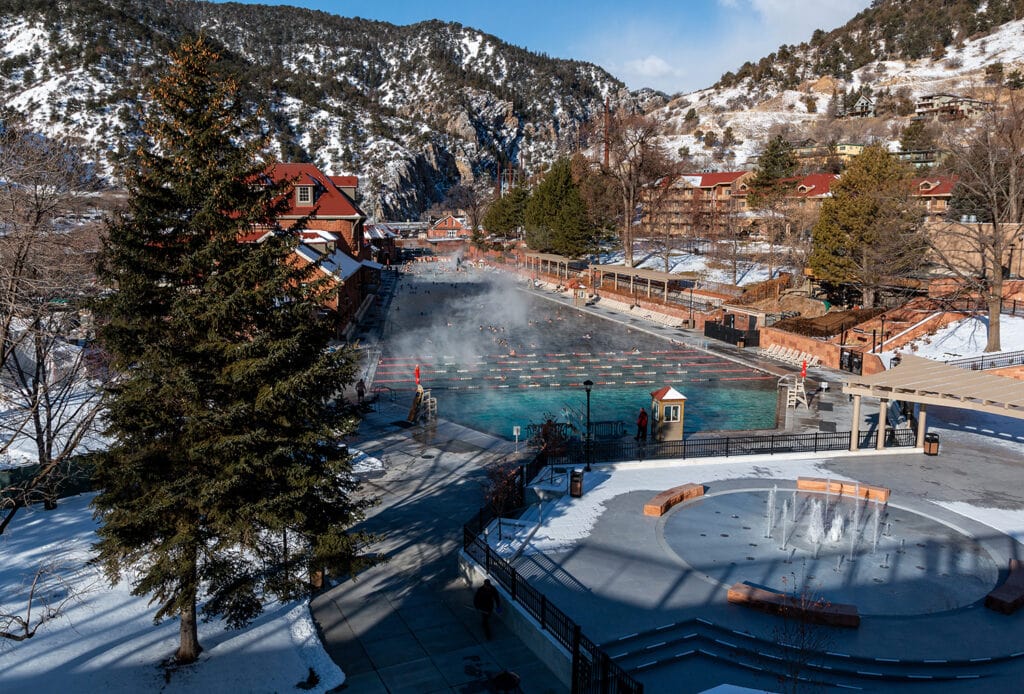
The best climbing trips include, well, a ton of climbing. But some of my favorite trips are those when I have a little extra time to explore nearby.
So if you are in the Rifle area or on the Western Slope of Colorado and need a rest day activity, I recommend any of the following.
- Go to the hot springs in Glenwood Springs.
- Play a round at the Rifle Creek Golf Course.
- Hike the Rifle Arch Trail.
- Sign up for a guided raft trip on the Colorado River.
- Visit Fruita, CO, and go mountain biking.
- Hike through the Colorado National Monument on the Liberty Cap trailhead.
- Check about the Rifle Fish Hatchery.
- Go to lunch in downtown Rifle.
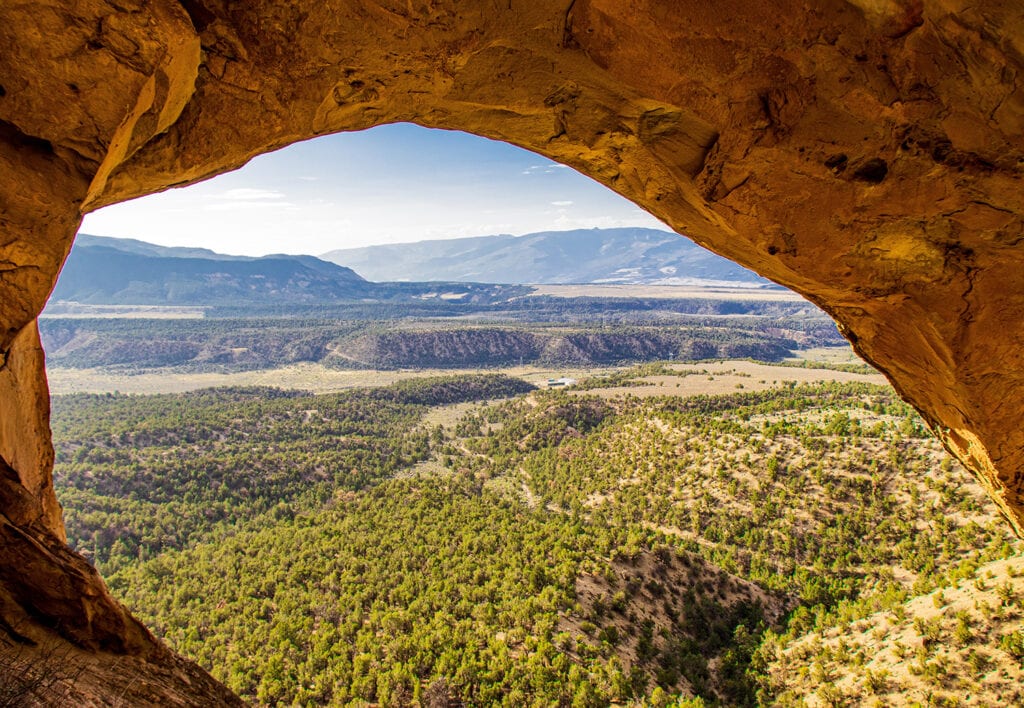
Other Climbing Nearby Rifle Mountain Park
If you are in the area for an extended amount of time, like at least a week, you may consider sampling some of the other climbing nearby. There is a ton of accessible rock climbing that could keep most climbers busy for a lifetime.
- Main Elk Creek (8) – good limestone sport climbing.
- East Elk Creek (9) – secluded and recently developed limestone climbing.
- Independence Pass (10) – an overlooked yet totally-worthy granite climbing area.
- Colorado National Monument (11) – desert sandstone climbing featuring towers and splitter cracks.

Final Thoughts: Do You Identify as a Sport Climber? Go to Rifle.
Rifle hosts one of the highest concentrations of hard climbing per single linear mile in the United States. The amount of high-quality climbing routes in the canyon truly is spectacular.
But remember, it’s up to us to preserve the resource. We, climbers, need to follow the rules set four by the city of Rifle and take care of the place.
Have fun! Check your knots and have fun falling!
Frequently Asked Questions (FAQs)
The hardest climbing at Rifle Mountain Park clocks in at 5.14c/d (8c+/9a). However, Joe Kinder did make a first ascent of a new route called Kinder Cakes which he proposed as 5.15a (9a+).
You can climb year-round in Rifle Mountain Park. Many of the walls get shade summer-sending. During the winter, you can even go ice climbing. However, the best time of the year to visit Rifle with the best sending conditions is during the shoulder seasons of Spring and Fall.
No, there is no traditional climbing in Rifle Mountain Park. However, if you must plug gear, you can check out Illusions on the Mitten Slab (12) in the Rifle Arch area.
References
Early days of Rifle Mountain Park
https://www.postindependent.com/rifle/early-days-of-rifle-mountain-park/
Hike the Ute Trail
https://www.nps.gov/thingstodo/romo_utetrail.htm
Southern Ute Indian Tribe history
https://www.southernute-nsn.gov/history/
Rifle Mountain Park
https://www.rifleco.org/91/Rifle-Mountain-Park
Rifle: A Climber’s Guide
https://www.wolverinepublishing.com/store/rifle-climbers-guide/
Rifle Climber’s Coalition
https://rifleclimbers.org/
Rifle Mountain Park Rock Climbing
https://www.mountainproject.com/area/105744310/rifle-mountain-park
Main Elk Creek
https://www.mountainproject.com/area/109649590/main-elk-creek
East Elk Creek
https://www.mountainproject.com/area/109649612/east-elk-creek
Independence Pass
https://www.mountainproject.com/area/105744331/independence-pass
Colorado National Monument
https://www.mountainproject.com/area/105744448/colorado-national-monument
Illusions on the Mitten Slab
https://www.mountainproject.com/route/109997399/illusions
